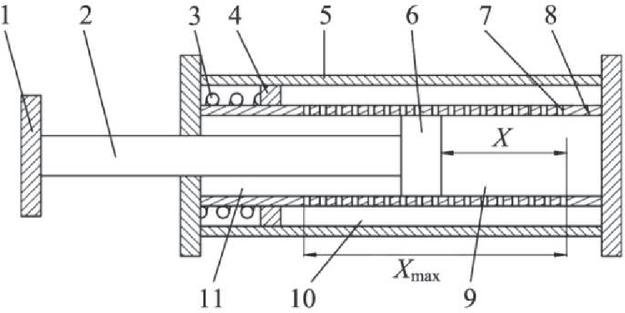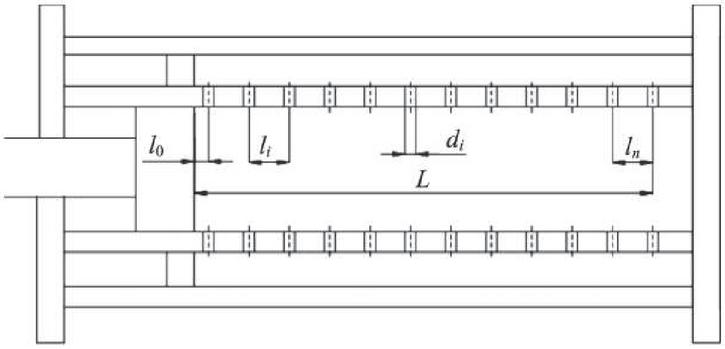Study on Intelligent Optimization Model of Porous Hydraulic Buffer
Yangbing Zheng1, 2, Xiao Xue3,* and Jisong Zhang2
1College of Mechanical and Electronic Engineering, Nanyang Normal University, Nanyang 473061, Henan, China
2Qinghai Wandong Ecological Environment Development Co.LTD, Geermu 816000, Qinghai, China
3School of Information Engineering, Nanyang Institute of Technology, Nanyang 473004, Henan, China
E-mail: x909@163.com
*Corresponding Author
Received 20 October 2021; Accepted 01 November 2021; Publication 09 March 2022
Abstract
In order to improve the buffering performance of porous hydraulic buffer effectively, the artificial fish swarm algorithm is improved to carry out optimization analysis of porous hydraulic buffer. Firstly, theory model of porous hydraulic buffer is studied, and the optimal model of porous hydraulic buffer is established. Secondly, the improved artificial fish swarm algorithm is put forward through improving step size and fish swarm behaviour. Finally, the optimization simulation analysis of porous hydraulic buffer is carried out, and results show that the proposed artificial fish swarm algorithm can obtain better optimal effect, and improve the performance of porous hydraulic buffer.
Keywords: Optimization, porous hydraulic buffer, artificial fish swarm algorithm.
1 Introduction
The porous hydraulic buffer is achieved by a series of specially arranging throttling holes on the wall of sub oil of sub oil cylinder. The number of throttle holes decreases with increase of buffer displacement to achieve the uniform buffer, This kind of buffer has compact structure, big energy absorption and no rebound. It is mostly used on cranes with velocity higher than 2 m/s or large moving mass. The porous hydraulic buffer applies the damping dissipation effect of the damping hole to convert the mechanical energy during impact into pressure energy and heat energy, which effectively reduces the vibration and impact. It has been more and more widely applied to the fields of vehicles, construction, heavy machinery and military and so on. The critical factor influencing the cushioning characteristics of porous hydraulic buffer is the aperture and arrangement rule of damping hole, therefore it is very necessary to optimize the parameters of porous hydraulic buffer. The porous hydraulic buffer dissipates the impact energy through damping hole at high speed, it has the advantages of large energy absorption density and the damping area changing with the buffer displacement [1].
In recent years, there are many researches on porous hydraulic buffer. The design method of damping hole and theory model of porous hydraulic buffer are studied by many scholars. The AMEim and MATLAB software are used to optimize the structural parameters of buffer, and the optimization effect is very good. The hole spacing and hole diameter optimization of porous hydraulic buffer is a research hot point. The distribution of damping holes is also concerned by some scholars, and researches on the effect of structures on performance of porous hydraulic buffer is few, the existing optimization model cannot obtain an objective and comprehensive buffer curve, therefore it is difficult to reflect the real performance of the porous hydraulic buffer. The dynamical characteristics of porous hydraulic buffer with different parameters are analysed [2].
Currently, the intelligent algorithms have applied to optimization of parameters of porous hydraulic buffer, such as the particle swam algorithm, genetic algorithm, however these algorithms have the disadvantages of premature problem and low optimization precision, therefore the artificial fish algorithm is an advanced swarm intelligent algorithm that is established by Doctor Li, but the traditional artificial fish algorithm has disadvantages, for example, the convergence speed of it is fast in the early stage and is slow in the later stage, it has poor analysis precision. Therefore, the artificial fish algorithm should be improved, and the improved algorithm is applied in optimization of porous hydraulic buffer [3]. The paper aims to propose an optimization model based on improved fish algorithm for optimizing the structure of porous hydraulic buffer.
Optimization Analysis of Porous Hydraulic Buffer.
2 Design Theory of Porous Hydraulic Buffer
According to different damping forms of porous hydraulic buffer, the hydraulic buffer can be divided into three types that are fixed damping type, gradual damping type and adjustable damping type. The fixed damping hydraulic buffer makes the damping area unchanged in the buffering stage, and the large pressure peak will generate, the energy absorption is uneven. The gradual damping hydraulic buffer gradually reduces the damping area in the buffering process, and the energy absorption is relatively even, it can avoid the disadvantages of fixed damping type. The adjustable damping hydraulic buffer can be adjusted properly when the working parameters are changed, and then the good cushioning effect can still be got under new conditions. The gradual damping hole with even energy absorption and no peak pressure is used in this research. The structural diagram of porous hydraulic buffer is shown in Figure 1, where “1” represents head butting, “2” represents the piston rod, “3” represents the return spring, “4” represents the return piston, “5” represents the outer cylinder, “6” represents the piston, “7” represents the damping hole, “8” represents the inner cylinder, “9” represents the rod less cavity, “10” represents the reset cavity, “11” represents the rod cavity [4].
Figure 1 Structure of porous hydraulic buffer.
There are two drilling methods on the inner wall of oil cylinder, the first method is to adopt equal distance and unequal diameter, the second method is to adopt equal aperture and unequal distance. The first method has large workload of design. The second method is easy to be implemented, and can control performance easily. This research uses design method of porous hydraulic buffer with equal aperture and unequal distance [5].
The assumptions are given as follows
Assumption 1: the mechanical friction force of moving part is ignored.
Assumption 2: the initial collision effect between the moving body and the buffer is ignored.
The energy relationship at any time of the buffer stroke is expressed by
| (1) |
where the first item on the left of the Equation (1) represents the initial kinetic energy, the second item on the left of the Equation (1) is work done by the external force in the buffer stroke. The first item on the right is the kinetic energy of system at current time, the second item on the right is the energy absorbed by the buffer device.
When the movement stops, the Equation (1) can be converted to the following form [6]:
| (2) |
where represents the total absorption energy of buffer, obviously, the absorption energy is decided by initial kinetics when there is no outer force .
In case of speed impact, the differential equation of motion of the buffer piston is expressed by [7]
| (3) |
The velocity is calculated by
| (4) |
In the buffering process, the flow equation of oil flowing through the orifice to the outer cylinder cavity of the buffer cylinder is calculated by
| (5) |
where denotes the flow coefficient, denotes the orifice area, denotes the effective piston area, denotes the piston position of buffer at any time, which is calculated by [8]
| (6) |
where represents the weight of oil, represents the kinematic viscosity,
The orifice area at any position is calculated by
| (7) |
where represents the position of piston in buffer stroke, represents the total buffering force of buffer.
The relationship between pressure difference and velocity of damping hole is expressed by [9]
| (8) |
where denotes the pressure difference; denotes the length of damping hole, represents the diameter of damping hole, denotes the local pressure loss coefficient, denotes the friction coefficient, denotes the maximum flow velocity.
The flow of annular clearance is calculated by [10]
| (9) |
where is the flow of annular clearance, represents the pressure difference between cavities with rod and without rod, represents the length of annular clearance.
The continuous equation of working chamber is expressed by [11]
| (10) | |
| (11) |
where denotes the volume of compressed oil in buffering process, represents the elastic module of compressed oil, represents the displacement of piston, represents the total stroke of buffer.
The intelligent optimization algorithm is a novel theory constructed by researchers according to simulating the phenomenon existing in nature. The intelligent optimization algorithm provides the novel solution method for solving the engineering actual optimization problem. The optimization of damping hole is the combination optimization problem.
The maximum buffering efficiency of buffer and the minimum peak pressure in the buffering process are selected as optimal objective, and the corresponding objective function is expressed by
| (12) |
where denotes the objective function, represents the weighted coefficient, represents the buffering efficiency of buffer, represents the minimum peak pressure in buffering process.
The distribution of damping holes is shown in Figure 2, the number, diameter and spacing of damping holes are selected as the optimization variables, the total throttling area of the porous hydraulic buffer is defined by , and the diameter of damping hole arranged on both sides of hydraulic cylinder is defined by , and the following expression is obtained [12].
| (13) |
Figure 2 Distribution diagram of damping hole of porous hydraulic buffer.
The number of variables of hole spacing is , and the following equation is satisfied:
| (14) |
where represents the distance from the first damping hole to top end of piston, are spacing of damping holes, represents the total stroke of buffer.
The top end of piston cylinder is used as reference, the location of any damping hole is obtained by [13]
| (15) |
3 Theory Model of Improved Artificial Fish Swarm Algorithm
The artificial fish swarm algorithm is an advanced swarm intelligence optimization algorithm. It was proposed by Dr. Li in 2001 according to fish foraging behaviour. The artificial fish swarm algorithm has some advantages, such as strong robustness, quick convergence speed, and good global searching ability. However, it has some disadvantages, such as low convergence speed in the early stage, poor analysis accuracy. To overcome these disadvantages of the artificial fish swarm algorithm, the improvement methods have been put forward in recent years. The view range and step size are improved through some methods, the variable step size adaptive algorithm can effectively improve the ability of global searching, the dynamical adjustment viewing factor and congestion factor are used to improve the convergence efficiency of algorithm. The fish behaviour is improved through some new strategies, a novel phagocytosis behaviour is proposed after foraging to save the optimization time, the swallowing behaviour is also introduced into the algorithm to reduce the complexity of algorithm. Integrating with other intelligent algorithms is also concerned by some scientists, the hybrid particle swarm algorithm is combined with the artificial fish algorithm to avoid the defect of falling into local optimization and obtain the global optimal solution. The ant swarm algorithm is also combined with artificial fish algorithm to achieve the complementary advantages [14].
The improved algorithm improves the optimization performance of artificial fish swarm algorithm to a certain degree. However, the disadvantages of slow convergence speed and low optimal precision in the later stage of algorithm have not been solved effectively, therefore the novel improvement method of visual view and step size are established to improve the convergence speed and global optimal ability.
Suppose there are artificial fishes, the status of every artificial fish is defined by , where is the variable to be optimized, the fitness function is defined by , the distance between artificial fishes is defined by , the visual view of artificial fish is defined , and the step size of artificial fish is defined by , and the congestion factor of artificial fish is defined by , and the attempting number is defined by [15].
The artificial fish swarm algorithm is optimized based on three behaviours that conclude foraging, clustering and tail chasing.
The first behaviour is foraging behaviour: the location of th artificial fish at moment is , a status is selected randomly in visual view, which is expressed by [16]
| (16) |
The objective function values are calculated respectively and are compared, if is better than , then moves to ; otherwise continues to move one step to randomly within its range of visual view, if the constraint condition is not reached after times trial, randomly moves one step to reach a new status, and the corresponding mathematical description is listed as follows [17]:
| (17) | |
| (18) |
The second behaviour is clustering behaviour: the location of th artificial fish at moment is , the number of partners in neighbourhoods is defined by is calculated based on distance function, and the centre location of partners is found out, the objective function value of this location is calculated, if , the food in the partner centre is more and not too crowded, and the artificial fish moves on step towards the centre, and the Equation (19) is carried out, otherwise return to foraging behavior [18],
| (19) |
The third behaviour is tail chasing behaviour. the location of th artificial fish at moment is , the partner with biggest food concentration in the current neighbourhood is searched, and the location of it is defined by , if , the food concentration in is large, and the surrounding is not too crowded, then the artificial fish moves to , and the Equation (20) is carried out, otherwise return to foraging behaviour.
| (20) |
The initialization of the basic artificial fish swarm algorithm is generated randomly within the feasible region, and the possibility of uneven distribution cannot be ruled out. The uneven distribution of artificial fish swarm is not conducive to the global convergence of the algorithm. According to the characteristics of chaotic Transformation: randomness, ergodicity and regularity, chaotic transformation is used to initialize the individual position of artificial fish school, which makes the initialized artificial fish have diversity and is conducive to the global convergence of the algorithm, the corresponding expression is listed as follows [19]:
| (21) |
where represents the controlling coefficient.
The foraging behaviour is also improved in this research. Artificial fish swarm algorithm mainly involves three behaviours: foraging, clustering and tail chasing, and foraging behaviour is the basis of algorithm convergence. Therefore, the improvement of foraging behaviour is also one of the important factors to improve the performance of the algorithm. This paper mainly aims at the problem of finding the maximum value of the function (the same applies to the problem of finding the minimum value of the function). In the process of optimization, the larger the function value is, the closer it is to the optimal value, and the smaller the function value is, the farther it is from the optimal value.
Assuming that the state matrix of artificial fish at time , firstly the fitness values for all artificial fish swarm are calculated, and then arrange them in descending order according to the fitness values (function values), then the better fitness values will be the first and the worst will be the last. Let the sequence number of the th individual at time be . if , it means that the position of the th individual at time is the best in the group, that is, it is the closest to the optimal value; If is equal to fish number, it means that the position of the th individual at time is the worst in the group, that is, it is the farthest from the optimal value.
The degree factor of being close to the optimal fish is defined by , which is calculated by [20]
| (22) |
where , the less the value of it is, the closer to the optimal fish it is, and the greater the value of it is, the farther from the optimal fish it is. When , Equations (23) and (24) are executed, and adopt the strategy of reducing the field of view for the fish group close to the optimal individual, so as to effectively avoid the fish group falling into the local optimum; when , Equations (10) and (11) are executed, and adopt the strategy of increasing the field of view for the fish swarm far away from the optimal individual, which can effectively improve the optimization speed of the algorithm [21].
| (23) | ||
| (24) | ||
| (25) | ||
| (26) |
where and are controlling coefficients.
Artificial fish swarm algorithm is an algorithm inspired by fish in nature, and the physical fitness transformation model is adapted according to the law between sports and physical fitness in nature. The consumption of physical fitness directly affects the moving step of fish swarm. Therefore, when improving the basic artificial fish swarm algorithm, the physical fitness of fish swarm has also become one of the factors we should consider. In the later stage of fish foraging, the physical energy is consumed to a certain extent, which will reduce the step length in the behaviour of fish foraging, crowding and tail chasing. If the fish continue to move with the previous step size, it is easy to make the fish fall into local optimization. It is particularly important to reduce the step size of the fish in time.
Physical fitness transformation model is introduced into the algorithm. The threshold of physical fitness attenuation is defined by , the artificial fish movement unit is defined by , and its initial value is equal to 0. With the iteration of the algorithm, will gradually increase. When the value of is greater than or equal to , it indicates that the physical fitness of artificial fish begins to decline, which will affect the change of step size in the foraging, clustering and tail chasing behaviour of artificial fish. Reduce the step size in each behaviour according to Equation (27). Only when the fish find food and their physical fitness is supplemented, the moving step of the fish will become larger [22].
| (27) |
where denotes the physical attenuation factor.
4 Optimization Analysis of Porous Hydraulic Buffer
In order to verify the effectiveness of the proposed model, the optimization design of damping hole of porous hydraulic buffer is carried out based on the proposed method. The working pressure of buffer is 15 MPa, the maximum working pressure of buffer is 20 MPa, the impact velocity is 5.23 m/s, and buffer stroke is 180 m. the diameter of piston ranges from 70–85 mm, and the annular clearance ranges from 0.2 mm to 0.4 mm, and the maximum buffering force is (1/101/3), where is the ideal buffering force. And the stiffness of spring ranges from 8.2 to 26 N/mm. The pre-set parameters of buffer is listed in Table 1.
Table 1 Pre-set parameters of buffer
| Parameter | Pre-set Value | Range |
| Diameter of piston/mm | 64 | 58–69 |
| Clearance width/mm | 0.15 | 0.15–0.4 |
| Spring stiffness/N/mm | 22 | 8.2–26 |
| Diameter of link/mm | 38 | – |
| Wall thickness/mm | 5 | – |
Designing of damping hole decide the buffering performance of buffer to a great degree. The initial distribution of damping hole is listed in Table 2.
Table 2
| Displacement/m | Number and Diameter of Damping Holes | Throttle Area/mm |
| 0.01 | 3 | 198 |
| 0.02 | 3 | 194 |
| 0.03 | 3 | 188 |
| 0.04 | 3, 3 | 185 |
| 0.05 | 3 | 176 |
| 0.06 | 2, 3 | 177 |
| 0.07 | 2, 3 | 173 |
| 0.08 | 2, 2.5 | 168 |
| 0.09 | 2, 2, 3, 3 | 160 |
| 0.10 | 3, 3, 3 | 155 |
| 0.11 | 2, 3, 3 | 152 |
| 0.12 | 2.5, 2.5, 3, 3 | 146 |
| 0.13 | 3, 3, 4, 4 | 135 |
| 0.14 | 3.5, 3.5, 4, 4 | 126 |
| 0.15 | 3, 3, 4, 4 | 85 |
The proposed artificial fish swarm algorithm is used to carry out the optimization of damping hole, and the final optimal results are listed in Table 3.
Table 3 Optimal results of damping hole based on artificial fish swarm algorithm
| Displacement/m | Number and Diameter of Damping Holes | Throttle Area/mm |
| 0.012 | 2.7 | 202.2 |
| 0.018 | 2.2 | 201 |
| 0.029 | 2.8 | 195.3 |
| 0.04 | 2.9, 3 | 190.4 |
| 0.05 | 3.5 | 182.1 |
| 0.06 | 2.4, 3.2 | 180.2 |
| 0.07 | 2.6, 3.2 | 179.4 |
| 0.08 | 2.6, 3 | 170.2 |
| 0.088 | 2.4, 2.6, 2.8, 3 | 166.7 |
| 0.099 | 2.6, 2.8, 3 | 159.3 |
| 0.108 | 2.3, 2.6, 3 | 156.2 |
| 0.12 | 2.6, 2.8, 3, 3 | 149.5 |
| 0.13 | 2.7, 2.8, 4, 4 | 138.3 |
| 0.143 | 3.2, 3.2, 4.3, 4 | 132.6 |
| 0.158 | 2.6, 3, 4.2, 4.2 | 92.6 |
The structural parameters of buffer before and after optimization are listed in Table 4.
Table 4 Structural parameters of buffer before and after optimization
| Parameter | Pre-set Value | After Optimization |
| Diameter of piston/mm | 64 | 66 |
| Clearance width/mm | 0.15 | 0.30 |
| Spring stiffness/N/mm | 22 | 26 |
The particle swarm algorithm and genetic algorithm are also used to carry out optimization analysis of damping hole of buffer, and the buffering performance of buffer are listed in Table 5.
Table 5 Buffering performance of buffer before and after optimization
| After Optimization | ||||
| Performance | Before | Genetic | Particle Swarm | Artificial Fish |
| Parameter | Optimization | Algorithm | Algorithm | Algorithm |
| Peak pressure/MPa | 4.7 | 4.6 | 4.5 | 4.2 |
| Pressure fluctuation peak/MPa | 2 | 1.75 | 1.64 | 1.25 |
| Maximum impedance force/kN | 14.5 | 13.2 | 12.0 | 11.4 |
| Average impedance force/kN | 8.6 | 8.7 | 8.8 | 9.0 |
As seen from Table 5, the impact conditions of buffer is same, the peak pressure after optimization decreases relative to that before optimization, the peak pressure after optimization obtained from improved artificial fish swarm algorithm is less than that from other two algorithms. The pressure fluctuation peak after optimization decreases relative to that before optimization, the pressure fluctuation peak after optimization obtained from improved artificial fish swarm algorithm is less than that from other two algorithms. The maximum impedance force after optimization decreases relative to that before optimization, the maximum impedance force after optimization obtained from improved artificial fish swarm algorithm is less than that from other two algorithms. The average impedance force after optimization decreases relative to that before optimization, the average impedance force after optimization obtained from improved artificial fish swarm algorithm is bigger than that from other two algorithms. Results show that the buffering performance after optimization is better than that before optimization. The proposed improved artificial fish swarm algorithm can obtain the best optimization effect of damping hole among the three algorithms.
5 Conclusions
The proper damping hole distribution and size of porous hydraulic buffer can make the buffering process smooth, and reduce pressure fluctuation. The artificial fish swarm algorithm is improved to optimize the porous hydraulic buffer, and optimal simulation results show that the proposed algorithm can get best optimal effect. The proposed algorithm provides favourable theoretical basis for optimal design of porous hydraulic buffer. The detail experiment analysis should be carried out further to verify the real effect of optimization effect of porous hydraulic buffer based on artificial fish swarm algorithm.
Acknowledgment
This work is supported by the Henan Provincial Key Science and Technology Research Projects (NO. 202102210126) and University-level STP project.
References
[1] Yan Wang, Zheng Lu, Jiang Dum, Experimental study on damping mechanism of buffered impact dampers, Applied Acoustics, 2020, 170(12):107492.
[2] X.D. Hea, L.L. Zhang, G.J. Wu, J.W. Gao, P. Ran, Muhammad Sajjad, X.W. Zhou, J.W. Cao, L. Xi, YL. Zuo, Y. Ren, Controllable intrinsic Gilbert damping in Pt buffered [Co/Ni]n multilayers with enhanced perpendicular magnetic anisotropy, Journal of Magnetism and Magnetic Materials, 2021, 519(2):167429.
[3] Zi-xuan, Li Guo-lai Yang, Feng-jie Xu, Li-qun Wang, Interval uncertain optimization for damping fluctuation of a segmented electromagnetic buffer under intensive impact load, Defence Technology, 2021, 17(3):884–897.
[4] I. Abid, P. Benzo, B. Pécassou, S. Jia, J. Zhang, J. Yuan, J.B. Dory, O. Gauthier Lafaye, R. Péchou, A. Mlayah, J. Lou, Plasmon damping and charge transfer pathways in Au@MoSe2 nanostructures, Materials Today Nano, 2021, 15(8):100131
[5] Wei Li, Yu Chen, Enrong Mao, Yuefeng Du, Haojun Wen, Damping Characteristic Analysis and Experiment of Air Suspension with Auxiliary Chamber, IFAC-Papers OnLine, 2018, 51(17):166–172.
[6] Yongshun Zeng, Mindi Zhang, Yuxin Du, Zhifeng Yao, Qin Wu, Fujun Wang, Influence of attack angle on the hydrodynamic damping characteristic of a hydrofoil, Ocean Engineering, 2021, 238(10):109692.
[7] X. Gao, H.D. Teng, Dynamics and nonlinear effects of a compact near-zero frequency vibration isolator with HSLD stiffness and fluid damping enhancement, International Journal of Non-Linear Mechanics, 2021, 128(1):103632.
[8] Quirino Estrada, Dariusz Szwedowicz, Alejandro Rodriguez-Mendez, Milton Elías-Espinosa, Jesús Silva-Acevesa, Jorge Bedolla-Hernández, Oscar A. Gómez-Vargasf, Effect of radial clearance and holes as crush initiators on the crashworthiness performance of bi-tubular profiles, Thin-Walled Structures, 2019, 140(7):43–59.
[9] Dong Ge, Jianming Peng, Keke Li, Chaoyang Huang, Moke Lian, Zhenglong Yang, Influence of water-based drilling fluids on the performance of the fluidic down-the-hole hammer, Journal of Petroleum Science and Engineering, 2020, 195(12):107817
[10] Xu Yang, Shouheng Zhang, Qiang Li, Guoxia Zhao, Shandong Li, The abnormal damping behavior due to the combination between spin pumping and spin back flow in Ni80Fe20/Rut bilayers, Journal of Magnetism and Magnetic Materials, 2020, 502(5):166495.
[11] Bowen Yi, Romeo Orteg, Dongjun Wu, Weidong Zhang, Orbital stabilization of nonlinear systems via Mexican sombrero energy shaping and pumping-and-damping injection, Automatica, 2020, 112(2):108661.
[12] Haixiao Gao, Jun Lu, Jianhua Zhao, Xinhui Zhang, Magnetization dynamics and Gilbert damping in a hybrid Fe/GaAs heterostructure, Solid State Communications, Solid State Communications, 2014, 192(8):31–35.
[13] Yongqiang Li, Tao Wang, Mao Zhou, Impact response characteristics and meso-evolution mechanism of functionally gradient brittle materials with pore hole damage, Composite Structures, 2021, 256(1):112989.
[14] Haitao Luo, Yuxin Li, Chaohui Fan, Xingyuan Wu, Guangming Liu, Design and experimental research on buffer protection of high-g penetrator for deep space exploration, Acta Astronautica, 2021, 189(12): 63–78.
[15] Jiwei Huang, Jie Zeng, Yufang Bai, Zhuming Cheng, Zhenhui Feng, Lei Qi, Dakai Liang, Layout optimization of fiber Bragg grating strain sensor network based on modified artificial fish swarm algorithm, Optical Fiber Technology, 2021, 65(9):102583
[16] Xialin Zhang, Lingkun Lian, Fukang Zhu, Parameter fitting of variogram based on hybrid algorithm of particle swarm and artificial fish swarm. Future Generation Computer Systems, 2021, 116(3):265–274.
[17] Yuguang Zhong, Zexiao Deng, Ke Xu, An effective artificial fish swarm optimization algorithm for two-sided assembly line balancing problems, Computers & Industrial Engineering, 2019, 138(12):106121.
[18] Zhi-xin Zheng, Jun-qing Li, Pei-yong Duan, Optimal chiller loading by improved artificial fish swarm algorithm for energy saving, Mathematics and Computers in Simulation, 2019, 155(1):227–243.
[19] Han Xu, You Qun, Zhao Chao, Fen Lin, Integrated optimization for mechanical elastic wheel and suspension based on an improved artificial fish swarm algorithm, Advances in Engineering Software, 2019, 137(11):102722.
[20] Xuhui Zhu, Zhiwei Ni, Liping Ni, Feifei Jin, Meiying Cheng, Jingming Li, Improved discrete artificial fish swarm algorithm combined with margin distance minimization for ensemble pruning, Computers & Industrial Engineering, 2019, 128(2):32–46.
[21] Jianpo Li, Pengwei Dong, Global maximum power point tracking for solar power systems using the hybrid artificial fish swarm algorithm, Global Energy Interconnection, 2019, 2(4):351–360.
[22] Zhang Zeqiang, Wang Kaipu, Zhu Lixia, Wang Yi, A Pareto improved artificial fish swarm algorithm for solving a multi-objective fuzzy disassembly line balancing problem, Expert Systems with Applications, 2017, 86(11):165–176
[23] Wenhu Zhao, Chengbin Du, Shouyan Jiang, An adaptive multiscale approach for identifying multiple flaws based on XFEM and a discrete artificial fish swarm algorithm. Computer Methods in Applied Mechanics and Engineering, 2018, 339(9):341–357.
[24] Yean Zhu, Weiyi Xu, Guoliang Luo, Haolun Wang, Jingjing Yang, Wei Lu, Random Forest enhancement using improved Artificial Fish Swarm for the medial knee contact force prediction. Artificial Intelligence in Medicine, 2020, 103(3):101811.
Biographies
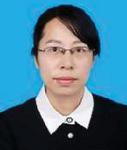
Yangbing Zheng, Associate Professor of control science and engineering, with Nanyang Normal University, Nanyang, China. She received her Bachelor of Engineering Science in Electronic Information Engineering from Nanyang Institute of Technology, Henan, China, in 2006; and the Doctor Degree of Engineering in detection technology and automatic equipment from China University of Mining and Technology, Beijing, China, in 2013, respectively. Her current research interests include active robot control, and nonlinear control.
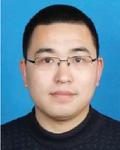
Xiao Xue, Associate Professor of School of Electronic and Electrical Engineering in Nanyang Institute of Technology, Nanyang, China. He received his Bachelor of Engineering Science in Electronic Information Engineering from Nanyang Institute of Technology, Henan, China, in 2003; the Doctor Degree of Engineering in detection technology and automatic equipment from China University of Geosciences, Wuhan, China, in 2015. His current research interests include Detection technology, and intelligent control.
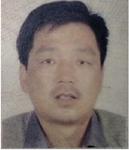
Jisong Zhang, President and Senior Engineer of Qinghai Wandong Ecological Environment Development Co.LTDzong. He has been engaged in the research of automatic control direction related to wolfberry planting.
International Journal of Fluid Power, Vol. 23_3, 253–270.
doi: 10.13052/ijfp1439-9776.2331
© 2022 River Publishers
